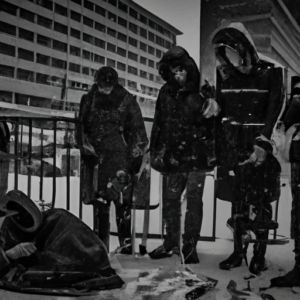Delving into the Canadian Opioid Crisis: A Look at Hamilton’s Winter Supports
The Opioid Crisis
In recent years, the opioid crisis has increasingly become a dire issue in Canada. This tragic epidemic has been causing havoc not only on the victims but also their friends, family, and the whole society. Exacerbated by the cold winter, it presents a threat to the homeless as their vulnerability heightens. The clear correlation between the opioid crisis and homelessness is noteworthy as it manifests in high rates of overdoses, crime, and fatalities. This blog post explores an article from Global News, focusing on Hamilton’s efforts to support its homeless population during this notorious season amidst the raging opioid crisis.
Overview: Hamilton’s Winter Supports Amidst the Opioid Crisis
Hamilton is a city marred by the opioid epidemic, facing an upsurge of overdose-related emergency calls, drug-related crimes, and unprecedented numbers of homeless individuals. The crucial necessity to respond to this dire situation is more evident, especially during winter. The city is making commendable efforts to mitigate the opioid crisis, and this initiative specifically targets homeless individuals during this harsh winter season.
Some of the notable efforts include:
- Increasing the number of shelter beds
- Offering near-round-the-clock drop-in centers
- Distributing naloxone, a medication designed to rapidly reverse opioid overdose
- Enhancing accessibility of health and counselling services
- Creating temporary respite areas
Shelter Beds Increase and Near-Round-The-Clock Drop-in Centers
The city is making a massive effort to ensure the homeless have a place to stay, especially during winter where the cold exacerbates the problems linked to homelessness and the opioid crisis. By increasing the number of beds in shelters and extending the hours of operation for drop-in centers, the city aims to provide a warm place to stay for those who need it. These centers not only provide shelter but are a pivotal link in delivering services like health care, counselling, and harm reduction facilities.
Naloxone Distribution and Enhanced Health Services Accessibility
Given the rising statistics of overdoses, the initiative to distribute naloxone kits is a prudent decision. These kits can rapidly reverse the effects of an opioid overdose, potentially saving many lives. In addition to this life-saving measure, the initiative to improve access to health and counselling services is crucial as it targets the psychological aspect of opioid addiction.
Creating Temporary Respite Areas
Temporary respite areas are further efforts to keep the homeless warm and safe during this critical period. These are particularly useful in emergencies when all other options are exhausted.
Effects of the Opioid Crisis: The Steep Unseen Cost
The opioid crisis is not just limited to the immediate victims. It also heavily impacts the social and economic domains of a society. The heightened crime rates, the increased workload on emergency services, the overwhelming pressure on healthcare systems, and the social distortion resulting from this pervasive crisis are profound.
Opioid Class Action: A Step Towards Accountability
To hold the big pharma companies accountable, a nationwide opioid class action has been launched. This lawsuit seeks damages for public health care costs relating to the opioid crisis in Canada. The defendant pharmaceutical companies have been accused of marketing opioids as less addictive than they are, resulting in widespread addiction and subsequent overdose deaths.
Conclusion: Key Takeaways
The opioid crisis is an issue that requires agile, comprehensive attention and solutions. Hamilton’s response that seeks to protect the homeless during winter is a commendable start that needs to be backed up with continuous efforts throughout the year. It is imperative to emphasize prevention and early intervention, along with symptomatic treatments such as naloxone. The ongoing opioid class action uncovers an important facet of this crisis, holding pharmaceutical companies accountable for their potential role in accelerating this epidemic.
As we continue to grapple with this epidemic, the commitment to keep the dialogue open is crucial. It counts towards the encouragement of innovative solutions, accountability, and empathy for the victims of the opioid crisis. This commitment reflects in concerted efforts by communities, governments, and civic leaders to address this crisis head-on and work towards eradicating it from our society.
